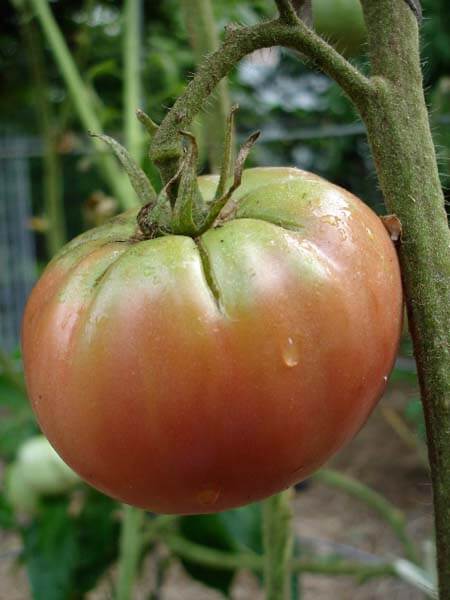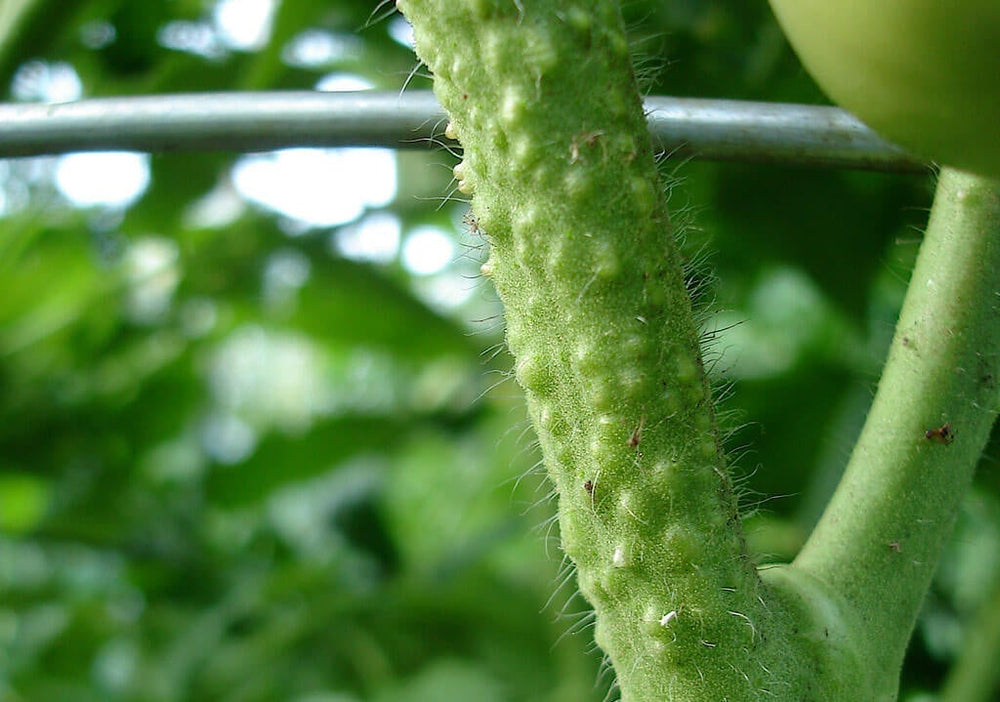Sometimes a tomato doesn't turn out looking like you'd expect. Here are some common tomato quirks you might see that are caused by neither insects nor diseases — and what (if anything) to do about them.
Bizarrely shaped fruit
Also called catfacing, this has nothing do with cats; the word describes puckering or misshapen fruit. It can happen to strawberries and tomatoes exposed to temperatures below 50 degrees when in bloom or setting fruit. The cool weather interferes with pollination and can cause the blossom to stick to the developing fruit, which keeps part of the fruit from developing. Meanwhile, another part does develop, so you end up with weird-looking and scarred fruit. It is most common on large-fruited types.
Sunscald
Tomato plants protect their fruit with an umbrella of leaves. In bright, hot weather, fruit exposed to the sun may develop a scalded, or sunburned, spot. This is most common on green fruit. At first a yellow patch appears on the part of the tomato that is in hot, direct sunlight; when the fruit ripens, it forms a gray spot with a papery surface. This is not a reason to avoid full sun unless you live in a desert climate, where a little afternoon shade is okay. Tomatoes have enough foliage cover to keep this problem from happening on most of the fruit.
Split skin
When a tomato fills up with water too fast, usually after a dry spell, the skin can split. Some varieties are "crack resistant," which means they don't split easily, but none are crack proof. Be sure to harvest and eat fruit with cracks right away. Left on the plant, cracks often rot, or are soon discovered by little beetles.
Sunburned leaves
If your brand-new tomato plants suddenly develop gray-white blotches on the leaves in hot and sunny weather shortly after planting, it could be a simple case of sunburn. The plants may have been in the dark on our truck and then in the shade at the store for a few days. When suddenly set out in full blazing sun, the leaves can burn. Don't worry: the plant will recover. Isn't it interesting that leaves, like our winter skin, may react to that first sudden burst of sun?




Bottom of tomato rots
This usually signals blossom-end rot, a condition that has several causes and is common in dry weather. Read more about it — and discover what you can do about it — in our Conquer Blossom End Rot article.
Blooms fall off
If spring weather is too cool, or a summer heat wave sets in, tomatoes blossoms may drop. Things will improve when the temperature gets back to normal. Most tomatoes need temperatures between 55 and 75 or 80 degrees to set fruit, but Bonnie's varieties are specially bred to take a little more punishment. You may plant early varieties (such as Early Girl) and extra heat-tolerant varieties (such as Solar Fire and Heatmaster) if weather extremes are typical where you live. See our Tomato Varieties page for tomatoes best adapted to cool or hot climates.
Green shoulders
Some tomatoes naturally keep a little green coloring at the top, or "shoulder," of the fruit. This is a genetic trait that is most common in heirlooms and older hybrids. Pick when the rest of the fruit looks ripe.
Bumpy stems
You will sometimes see lots of little raised bumps on the main stem (see image at top of page). Fortunately, this is usually nothing bad. They're just the "root primordia," or earliest stage of roots that would develop if the stem were underground. They are most common in wet weather. Occasionally the bumps signal underground root damage, so watch the overall health of the plant.
Bristly stems
Sometimes those bumps on the stem become white bristle-like growths. Those are called aerial (or adventitious) roots, and that's just what they are: growths that would turn into regular roots if they were in the soil. Though the roots themselves are not an indication that anything is wrong with the plant, they often develop where there is excess moisture (for example, when there's been a lot of rain, or if the plant was planted in an area in which water tends to pool), so be sure you're allowing the plant plenty of drainage.
For more information on growing and caring for your tomatoes, visit our tomatoes page.





 Herbs
Herbs
 Vegetables
Vegetables
 Fruit
Fruit
 Flowers
Flowers
 Succulents
Succulents


